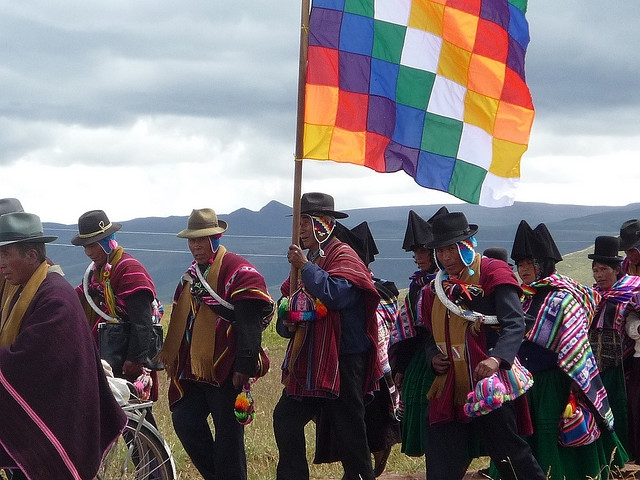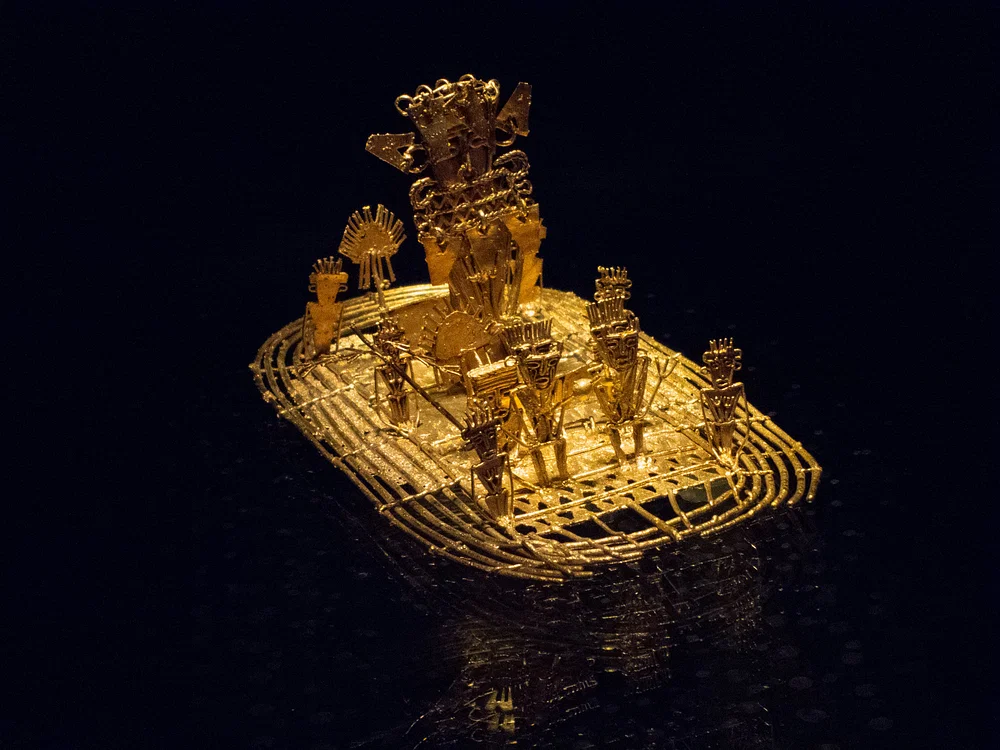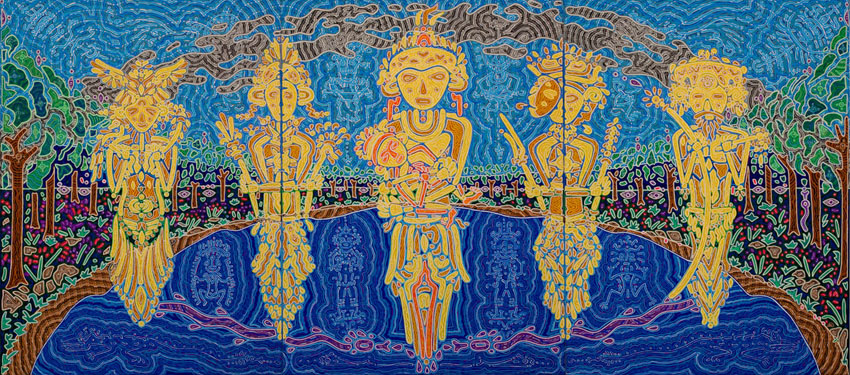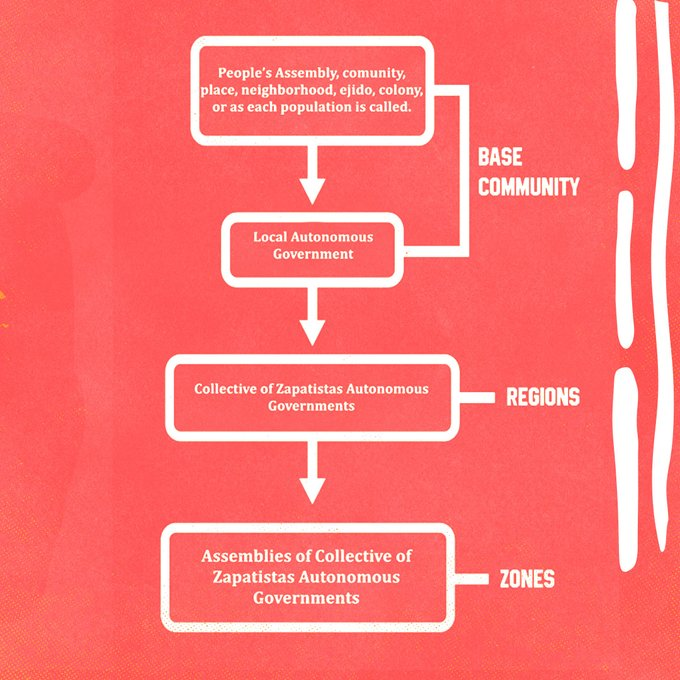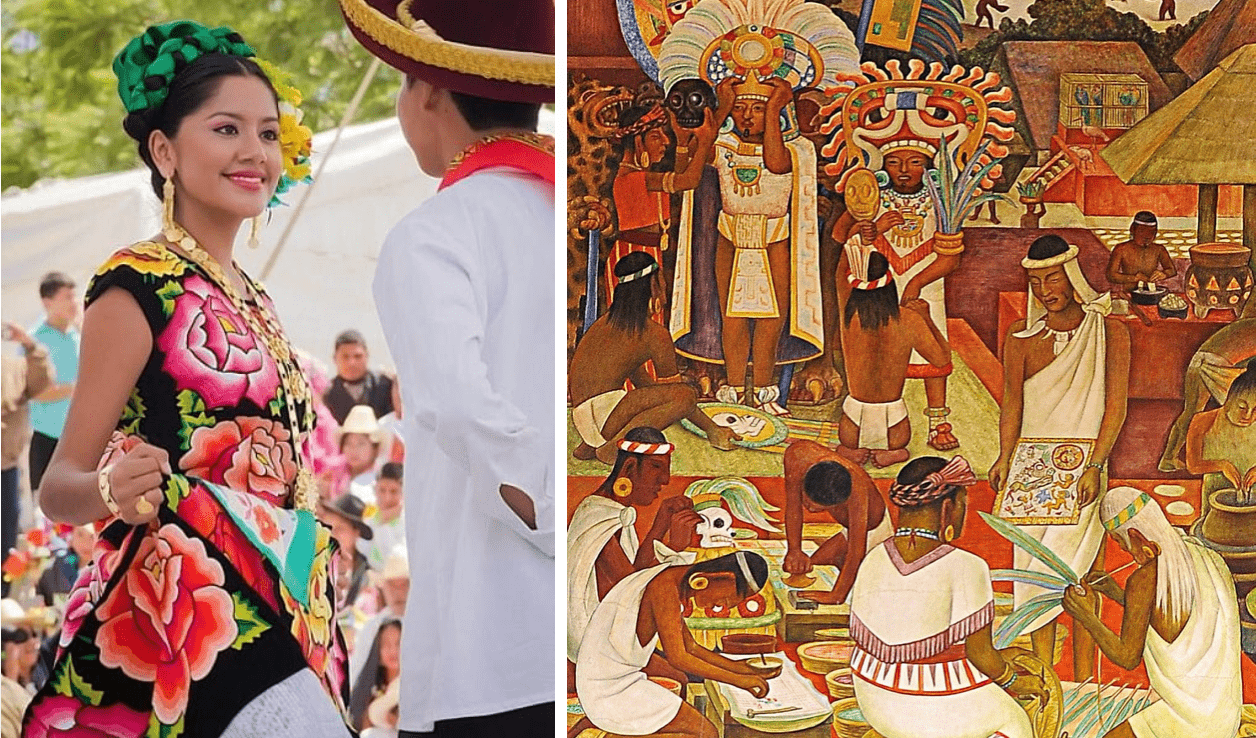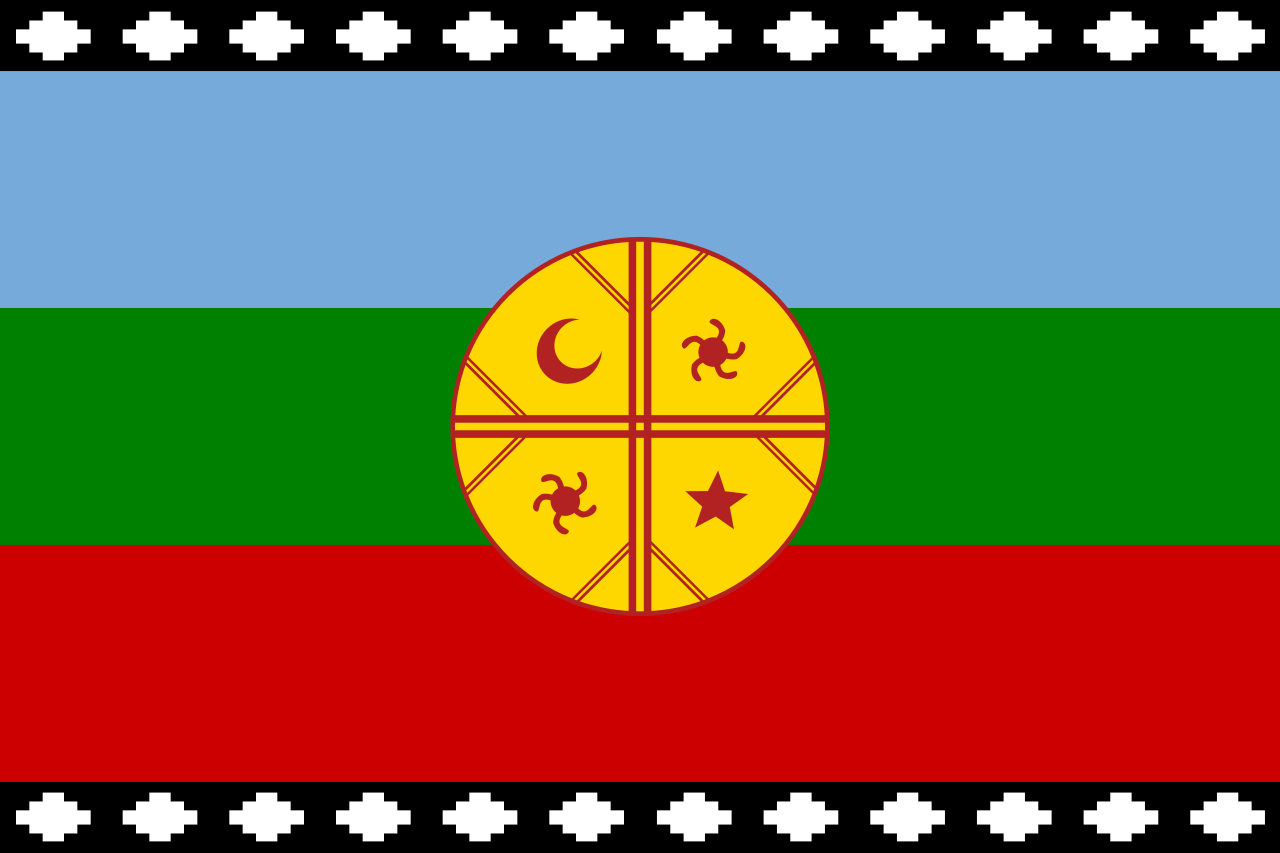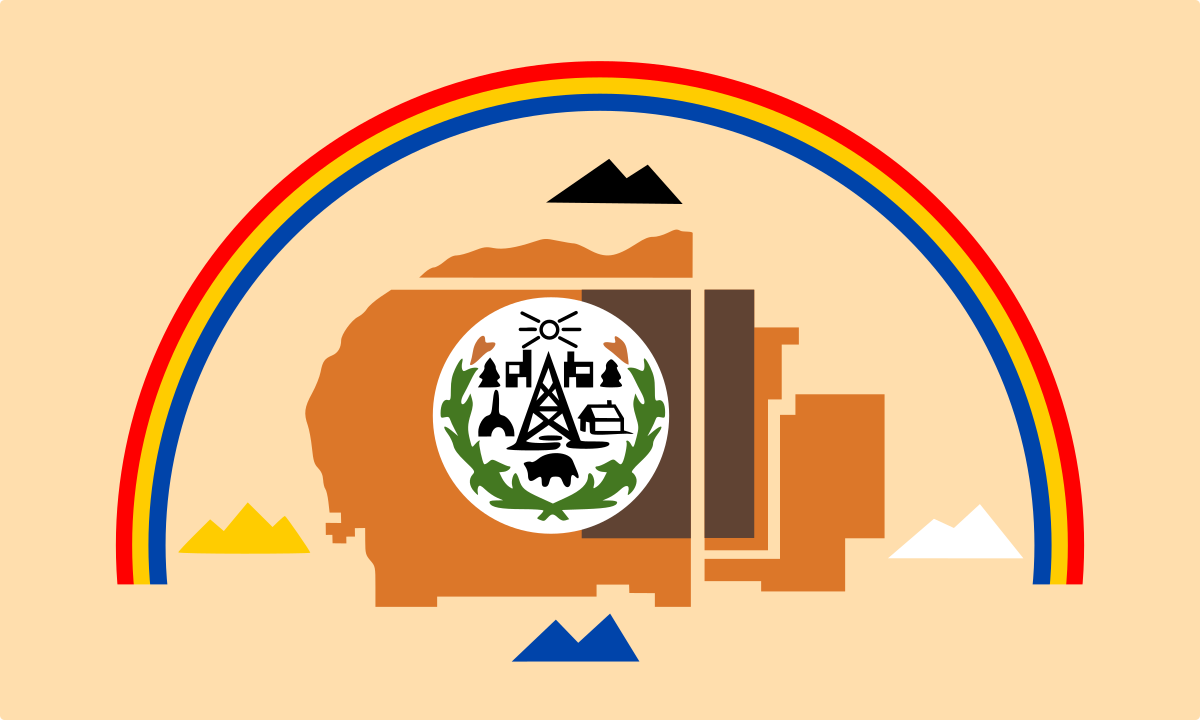When studying the US or Canada, we are not studying a nation, but rather a prison house of nations bent on replacing the native or totally assimilating. Like Israel, this is the stated goal of the US project and it is no wonder why ‘manifest destiny’ bears barely any discernible differences from ‘lebensraum’ or ‘Zionism’. The most important aspect to these projects is the myth making that underlies their so-called rights to the land, and none of them are particularly unique. Instead all find themselves firmly justifying and creating the “white” identity, ever fluid, they pick and choose who constitutes ‘white’ and define it based on exclusion of an ‘other’. This is a trend we see manifest itself in medieval antisemitism which lies at the root of the story of the Zionist entity's creation. We also see the beginnings of whiteness form in the crusades and Spanish Reconquista, which sought to reclaim land they believed to be rightfully theirs. During this Reconquista we would see the same brutality Columbus would import to the “New World” on behalf of Spain, only adding to the rhyming.
This is the prologue to the story of Thanksgiving, and it's a very poignant history as settlers call a ceasefire to celebrate their genocidal Thanksgivings as they always have. Here I plan to cover three major topics, the true history of Thanksgiving, only the surface of the true extent and face of colonial occupation, and the current movement settler-Marxists are alienated from due to one reason or another. It will not have any order and we will revisit topics as I like in a real tradish way, it's gonna be fun. This of course could be a book but we will have to settle for an effort post until I have more time. This prison house of nations of course finds its foundations not in Spanish colonialism, but English, although the Spanish did have to supply what amounts to a venture capitalist endeavor to send Columbus west where most people assumed they’d find another continent or find a path to Asia.
Our first myth we will dispel is the term Indian, commonly we are told Columbus was confused and thought we were in the East Indies or India and therefore the name Indian is just the result of a doddering fool. In reality the term is far more insidious and not the result of ignorance, no, instead it is the result of the settlers dehumanization of themselves as they begin to feed on the blood of the colonized. Russel Means (anti-communist and former leader of AIM) in a speech given in 1980, that would be problematic by today's standards, said: “did we really know what it meant to be Indian?” This question has a lot of layers, you have what does it mean to be a second class citizen? To be actively genocided? What is the origin of the term? “I got a letter while I was in prison last year, from a professor at the University of Turin in Turin, Italy. He said ‘you probably already know this, but I… got to tell you anyway.’ He said Columbus was not looking for India, or the Indies. He wasn’t looking for the far east, but India had not yet been colonized by Britain and there was no such country called India or the Indies, in 1492. India was then known as Hindustan so if he was looking for Hindustan we would be called Hindus, if that is the truth of what the white man has been telling us and the world. But this professor, and I have since got the correct translation from other Italian people, but when Columbus first encountered the red people in the Caribbean he saw them and he wrote in his journals that we were ‘generous to a fault’. That we would ‘share everything’ every one of our possessions, even the clothes off our body, and because we were so generous we would ‘make excellent slaves’. He did take back 500 of us to Spain as slaves. Another tidbit of history did you know that the majority of slaves in America were Indians up to and including the year 1715? Something else they don’t tell anybody else, but we were not a ‘good’ economic risk. Number one we died from all their diseases, or else we’d split for the woods. Economics is whats pressured them into bringing in the African people as their slaves, but up until 1715 we were the majority of the slaves in the United States alone. Getting back to Columbus he called us ‘Indios’ and the correct translation from Italian into English; ‘Dio’ in Italian means ‘God’. ‘In-’ and ‘-s’ with it, put together means ‘people in with God’. That’s the correct translation of ‘Indios’ ‘people in with God’”
There is plenty we skipped, plenty to criticize, but what we have here is a very surface level examination of what being Indian actually meant in full historical context. Russell Means is hardly somebody I endorse, but I will not he is Oglala and is my Great Uncle, and for that I am responsible for demystifying his achievements and must inform people that for one reason or another any good he did, he severely out weighed with bad. My favorite story is about these warriors' courageous efforts to stop a Thanksgiving feeding happening only a few miles down the road. See the land our org acquired with help from donors here, is where this exact scene took place, and is that close to the Means ranch and the LIbertarian project “Republic of Lakotah”. My uncle David Swallow Jr. who we actually do support, was feeding people under the thought “the churches are the only group feeding people today and they lie to us and brainwash us” so he provided a Lakota feed with Lakota spirituality, and an oral history. Russell and company destroyed the feast in protest, I wonder why they couldn’t go to a church instead? He also ran guns to the Contras, but this is a story for another time, the Thanksgiving story makes it in here because of the theme, and because I need a way to talk about the Contra thing despite its brief mention we are just clearly off course.
That brings us to a discussion on the Colonial land divides, which all come once again from the Pope (see there is a theme here in why I claim Reconquista and Crusades as first iterations) and the infamous ‘Doctrine of Discovery’ established over several Papal Bulls meant to settle the squabbles of Empire. First the world is divided between Spain and Portugal, then France and England insert themselves into the equation. This led to a crisis of irreconcilable economic based conflict, that was eased through the idea of terra nullius, nobody owns the land if Christian’s do not own the land. This left the majority of the world conveniently vacant and to be tamed. When there were what appeared to be people “discovered” on these lands, they simply were not people until they accepted Christ, and even then their treatment would make one wonder what the Spanish thought Jesus meant when he said “treat others as you would want to be treated”. Now this seems so far away it's a wonder why I am insisting knowing this is so important, I must refer to the Marshall Trilogy and Ruth Bader Ginsburg's rulings with regard to NoDAPL. What these cases establish is the Doctrine of Discovery is the very basis of not only “International Law” but US Law.
This brought the original settlers of Anglo-America here first with the colony of Roanoke, which ended in the strange disappearance of the settlers as the story goes. In reality this common folklore of the events that occurred comes to hide the failures of English rule, for how could Europeans die but savages be so successful that the settlers starving to make profit for merchant guilds in Europe, would abandon the colony and integrate into the Croatoan Island community. This forced England to launch Jamestown which enabled the cartography necessary for the Mayflower to make its famous journey. The map they used brought them to the Cape Cod area, and yet another piece of mythology comes about. Instead of Plymouth Rock being the first place they landed, in reality, it was first encounter beach where the first interaction they had with Indigenous people would be by the Nausett whose food stores the religious zealots stole, resulting in the chasing of the settlers back to their ship and forcing them to sail to Plymouth Rock.
On their map was the town Pawtuxet, an Indian town with significant population and agriculture. They expected to find people when they came into the town but what they found was an apocalypse unfolding as people had died of disease leaving the town essentially empty with enough room for the settlers to move in. This came after a harsh winter where out of paranoia they turned their fellow pilgrims who died to illness or starvation, into scarecrows armed with muskets to make the Mayflower appear to be well guarded and armed. In their letters they pretend to have dignified them with burials, but when they finally moved into the town apparently emptied by an act of God; the lifeless towns now life filled smoke stacks let neighbors know someone had moved in.
“Hello Englishman” was the first words heard by the puritans establishing Plymouth Rock, or more so squatting on existing Indigenous infrastructure. The look on their faces must’ve been one of wonder and fear, but overall it convinced them they were meant to be here.
Thomas Morten wrote in his description of the Indians of New England, 1637; "The Hand of God fell heavily upon them, with such a mortal stroke that they died in heaps as they lay in their houses; and the living, that were able to shift for themselves, would run away and let them die, and let their carcasses lie above the ground without burial. For in a place where many inhabited, there hath been but one left alive to tell what became of the rest; the living being not able to bury the dead, they were left to crows, kites, and vermin to pray upon..." This was Patuxet, and the mandate from God the pilgrims were meant to be there, just look at the timing. The Indian who said “Hello Englishman” was named Samoset, an Abanaki sagamore (a type of sachem or minor ‘chief’) who learned English not from God, but the sadistic acts of a “forward thinking” colonizer named Sir Ferdinando Gorges who routinely kidnapped populations England wanted to colonize, taught them English and transplanted back in their homes to act as translators for future colonizers. This is how he earned his name “The Grandfather of Anglo Colonialism” and also how Tisquantum (often called Squanto) also learned English.
After explaining where they were, and what had happened in Patuxet, Samoset would leave to talk to the nearby Grand Sachem, or Massasoit. As you might notice there are quite a few myths in the making at this point in our story, and one of the oddest ones is the renaming of a man to his title by settlers. A Massasoit was an inter-tribal Chief in charge of settling disputes of a larger federation, and handling redistribution of their tributary system. Even his descendents wrongly name him this due to the profound effects of colonialism on education, but Ousemequin is his true name. They returned with 60 men and signed a treaty formally ceding Patuxet to the settlers. This is then the first treaty, which means it's the first of many to be broken, however the terms were one of mutual defense, and that if an Indian hurt a white man that they should be turned over for justice. This is also where Tisquantum finally meets the pilgrims, he is placed here to act as their interpreter as he was from Patuxet. Unfortunately by the time Sir Ferdinando sends him home to fulfill his destiny, the angel of death passed over Patuxet and smallpox ravaged them. The myth became, “the single most perfect human being on the continent to help the pilgrims” by PragerU and a “...special instrument sent of God...” by Plymouth governor William Bradford.
The spring after the Mayflower returns to Europe, the pilgrims try to pay for looting the graves and food stores of the Nauset people who attacked them on First Encounter Beach, as it is known today. It would then be that fall, prior to the arrival of the next ship the Fortune, that the classically depicted idea of “Thanksgiving” happened. That is a harvest party where Indians and Pilgrims come together in the first ever melting pot! In reality our only written account of the event comes from Edward Winslow who wrote in a letter, “Our harvest being gotten in, our governor sent four men fowling, that so we might after a special manner rejoice together after we had gathered the fruit of our labors. They four in one day killed as much fowl as, with a little help beside, served the company almost a week. At which time, among other recreations, we exercised our arms, many of the Indians coming amongst us, and among the rest their greatest king Massosoit, with some ninety men, whom for three days we entertained and feasted, and they went out and killed five deer, which they brought to the plantation and bestowed on our governor, and upon the captain and others…” Despite common belief, this wasn’t upon invitation but instead it was Ousemequin upholding their end of the treaty because he believed the settlers were under attack, when in fact they just loved to shoot guns when they partied. Thanksgiving however would be something entirely else, where the devout would spend their day in church giving thanks to God, and was a fast. After this point relations between the settler and the Wampanoag would worsen.
This was primarily because Tisquantum used the English to usurp power from Ousamequin, and collect tributes from other sachem in place of the Massasoit. When the settler found out they switched translators, Tisquantum would die disgraced within a year of that first so-called Thanksgiving. In the summer of 1622, the Merchant Adventurers sent a third ship and established a new colony north of Plymouth named Wessagusset in Massachusett territory (that is the people from whom the state takes its name.) Ousemequin falls ill and is brought back to health by a settler from Plymouth, and then tells the settlers about a plan the Massachusetts had to destroy Wessagusset and Plymouth due to the poor relations that capitalist greed in Wessagusset was causing. Then while Wessagusset was besieged, Plymouth colonists are informed by a survivor who escaped the siege of the situation and a group of men are sent to “negotiate” resulting in the execution of the Masschusette sachems under the guise of peace talks. This then resulted in a power vacuum that Ousemequin used to gain more influence in the region, as in his eyes he was the ruler of these lands and the pilgrims were now part of his people. However the treaty they signed would claim the Womponoag people as subjects of King James. The Merchant Adventurers go bankrupt in 1626, and their debt is then shifted onto the settlers who had yet to turn a profit. The following year the Anglo-French War of 1627-1629 was declared and due to the French domination of the beaver market, and English high society losing their source, the pilgrims then capitalized on this market by expanding extraction into Maine. It would be due to King Charles I’s decision to disband parliament, due to Puritans within voicing discontent over his marriage to a Catholic, that would send 80k Puritans leaving England in the Great Migration between 1629-1640. A thousand of whom would go to New England to establish the Massachusetts Bay Colony next to Plymouth. Here John Winthrop, who was the captain of the ship, said the famous line “For we must consider that we shall be as a city upon a hill. The eyes of all people are upon us. So that if we shall deal falsely with our God in this work we have undertaken, and so cause him to withdraw his present help from us, we shall be made a story and a byword through the world.”
This of course is the real version of the story we tell children in kindergarten as they craft hand turkeys, but in reality the first day of Thanksgiving celebrated by the pilgrims came only a few years after the massacre of Massachusetts' sachems. 1637 during the “Battle” of Ft. Mystic, at the end of the Great Migration, our proto-Zionist found themselves looking more and more to replace the natives instead of living alongside them. It was the Green Corn festival in what is now Groton, CT that Dutch and English settlers surrounded the celebration and ordered everyone leave the Fort Mystic stronghold (at the time one of the largest forts in the world equivalent in military technology to the Europeans besides the guns) and then subsequently massacred them and burned the fort down. After the murder of 700 unarmed women, children, and men the settlers would begin murdering villages wantonly stealing land. Those who survived were sold into slavery, and for a long time ships of up to 500 Indian slaves would leave New England's ports regularly. After a raid in Stamford, CT the Wampanoags had lost, and Metacomet and his people were beheaded, their heads mounted on spikes for decades and at the time kicked down the road like a soccer ball.
That brings us to today. The National Day of Mourning for Indigenous activists, which is a yearly event that's been ongoing since the 1970 Occupation of the Mayflower II by United American Indians of New England (UAINE) and AIM (American Indian Movement) which was one of 71 Red Power occupations that occurred from 1965 to 1973. This event stems from a very specific person named Wamsutta, or Frank B. James, a Wampanoag (you might recall them from Trumps recent attempt to bring back the Termination Era) and is continued by his granddaughter Kisha James (Oglala, Wampanoag) and her parent Mahtowin (Oglala). I will quote heavily from their website, but this began because Wamsutta was asked to write a speech for the 350th anniversary of the landing at Plymouth:
“Three hundred fifty years after the Pilgrims began their invasion of the land of the Wampanoag, their "American" descendants planned an anniversary celebration. Still clinging to the white schoolbook myth of friendly relations between their forefathers and the Wampanoag, the anniversary planners thought it would be nice to have an Indian make an appreciative and complimentary speech at their state dinner. Frank James was asked to speak at the celebration. He accepted. The planners, however , asked to see his speech in advance of the occasion, and it turned out that Frank James' views — based on history rather than mythology — were not what the Pilgrims' descendants wanted to hear. Frank James refused to deliver a speech written by a public relations person. Frank James did not speak at the anniversary celebration.”
Instead the grassroots organizers got in contact with the just budding American Indian Movement, who by this time were regularly doing demonstrations as well as combating police brutality with their Red Car Patrol. From an optics standpoint they even looked like “real life Indians from the movies” to quote my super traditional uncle, and so when AIM came the news focused on them. Now when we remember this moment in time we remember the red paint thrown by AIM onto the sail, even though this was the idea of the grassroots organizers, and the later burying of Plymouth Rock by AIM. That is why I’ve gone around the country the last 3 years investigating the on-the-ground conditions of the current US, while deep diving the radical history hidden from view, and interviewing veterans of the movement as well as current day organizers in 53 reservation communities so far. I want people to hear about the uncommon history of the movement, because I believe it is this hidden history that we will find the answers to overcome our current roadblocks as we recognize how many wheels are being reinvented and lessons we are not learning.
This post is about the true history of Thanksgiving, yes, and that is settler-colonialism. So as settlers everywhere gorge themselves in thankfulness their bombs don’t fall on them, take the time to educate yourselves about this history. Because this genocide didn’t stop, it isn’t 350 years old either. For my people these stories and these celebrations happen much more recently at the end of the 19th century, and as Marx was just about to pen his first sentences of Capital; my people were already waging national liberation against it. This is the project we support that has continued to this day, and we want to bring the communist movement to the head instead of watching as we can’t even find the tail to follow. Right now the western left thinks painting the claws of the Beast is heroic, as they ignore real revolutionaries who have stood and fought the government, while the communists of the time ran when the guns started shooting. It was the BPP who gave us hope the communists might have something to offer and when they were neutralized, the feds turned their scopes on us. I could go on and on and never end, but then you wouldn’t need another post from me. So be sure to follow our other social medias all found under linktr.ee/chunkalutanetwork and learn more about our project and program as more details become public.
We really want to encourage people who are unable to organize regularly to donate $5 a month on our patreon.com/chunkalutanetwork or donate to $ZitkatosTinCan on cashapp or @zitkato on venmo. Lastly we were recommended we start one of these https://liberapay.com/ChunkaLutaNetwork/ so please if you have a lot of money and don't know where it will be best used, I highly recommend it come to us. We are building a community center to house 9 people, provide the first ever laundromat to the Pine Ridge reservation, re-establish the former AIM Survival School in Porcupine, building food forests, community gardens and a buffalo prairie to decommodify our ceremonies that ranchers currently profiteer on, we already have provided 2 house for families there, and have kept countless people alive. There are plenty of reasons to support so please ask questions, please come look, and if you don't believe us we can raise money for you to come visit the land base yourself and see first hand what we can publicly do. We don't post much about anything besides our Pine Ridge operations as that is backed with a lot of organic gun ownership due to the people we support suffering under a reign of Terror in the 70s. You see the government installed a dictator and armed his right wing militia with armor piercing rounds on the Pine Ridge reservation, who went on to murder a per capita number of people similar to Pinochet the first 3 years after his coup. This is in your backyard and you ignore it, dont anymore, we will remember.
Megathreads and spaces to hang out:
reminders:
- 💚 You nerds can join specific comms to see posts about all sorts of topics
- 💙 Hexbear’s algorithm prioritizes comments over upbears
- 💜 Sorting by new you nerd
- 🌈 If you ever want to make your own megathread, you can reserve a spot here nerd
- 🐶 Join the unofficial Hexbear-adjacent Mastodon instance toots.matapacos.dog
Links To Resources (Aid and Theory):
Aid:
Theory:


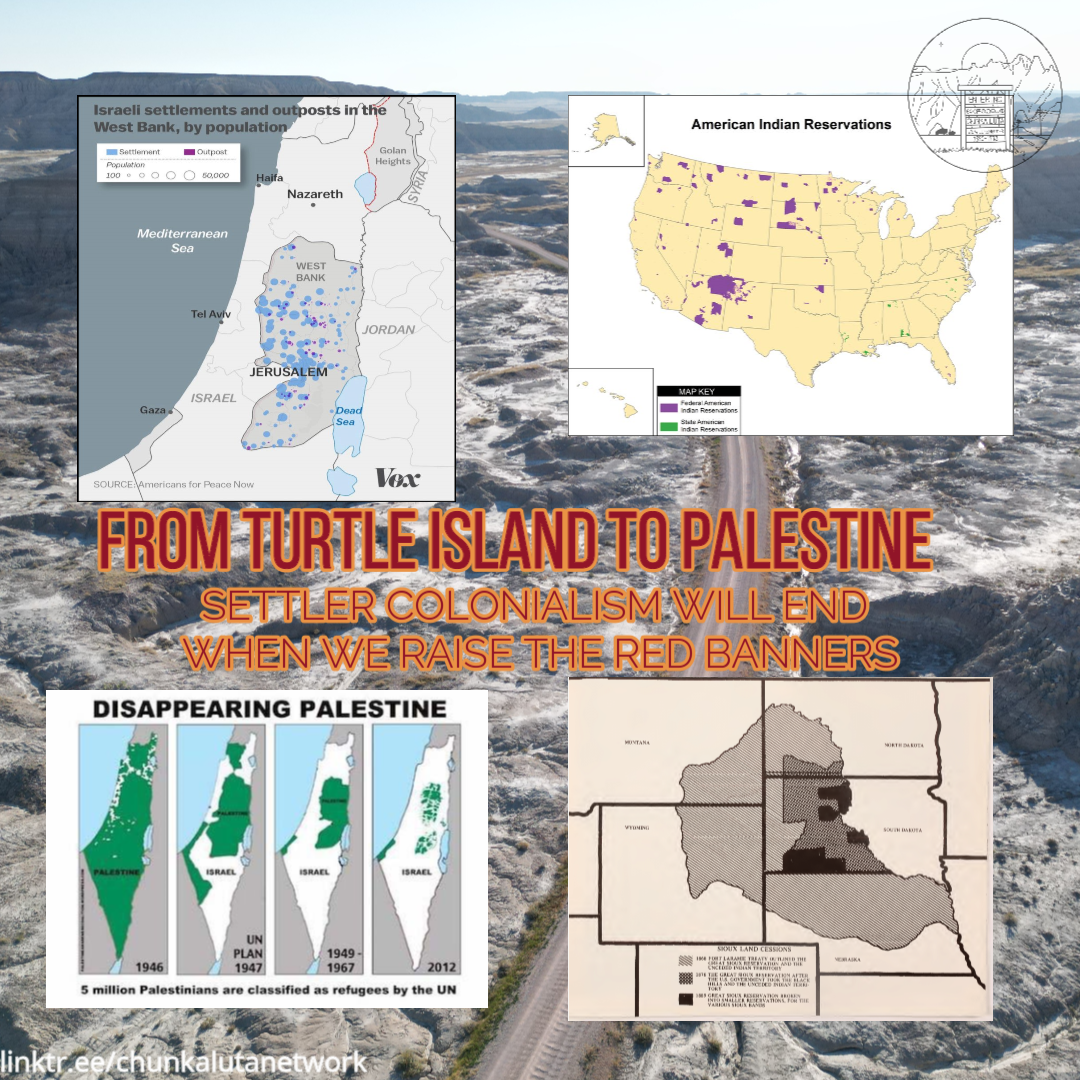
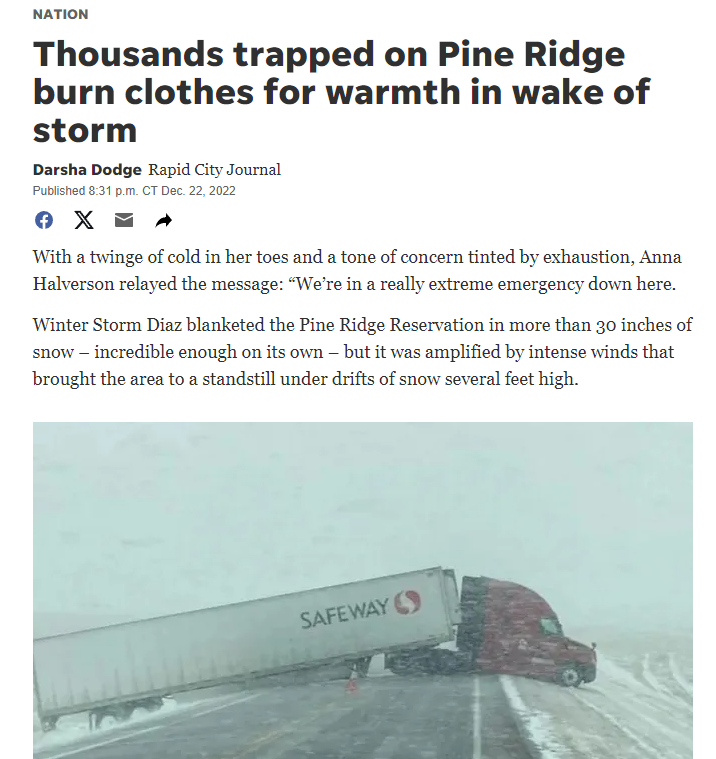 And we lost a lot of people. I knew winters were hard so had already started raising money before the emergency happened, but when it did we were able to raise 5k and bring a uhaul full of blankets and wood and water to the Rez
And we lost a lot of people. I knew winters were hard so had already started raising money before the emergency happened, but when it did we were able to raise 5k and bring a uhaul full of blankets and wood and water to the Rez 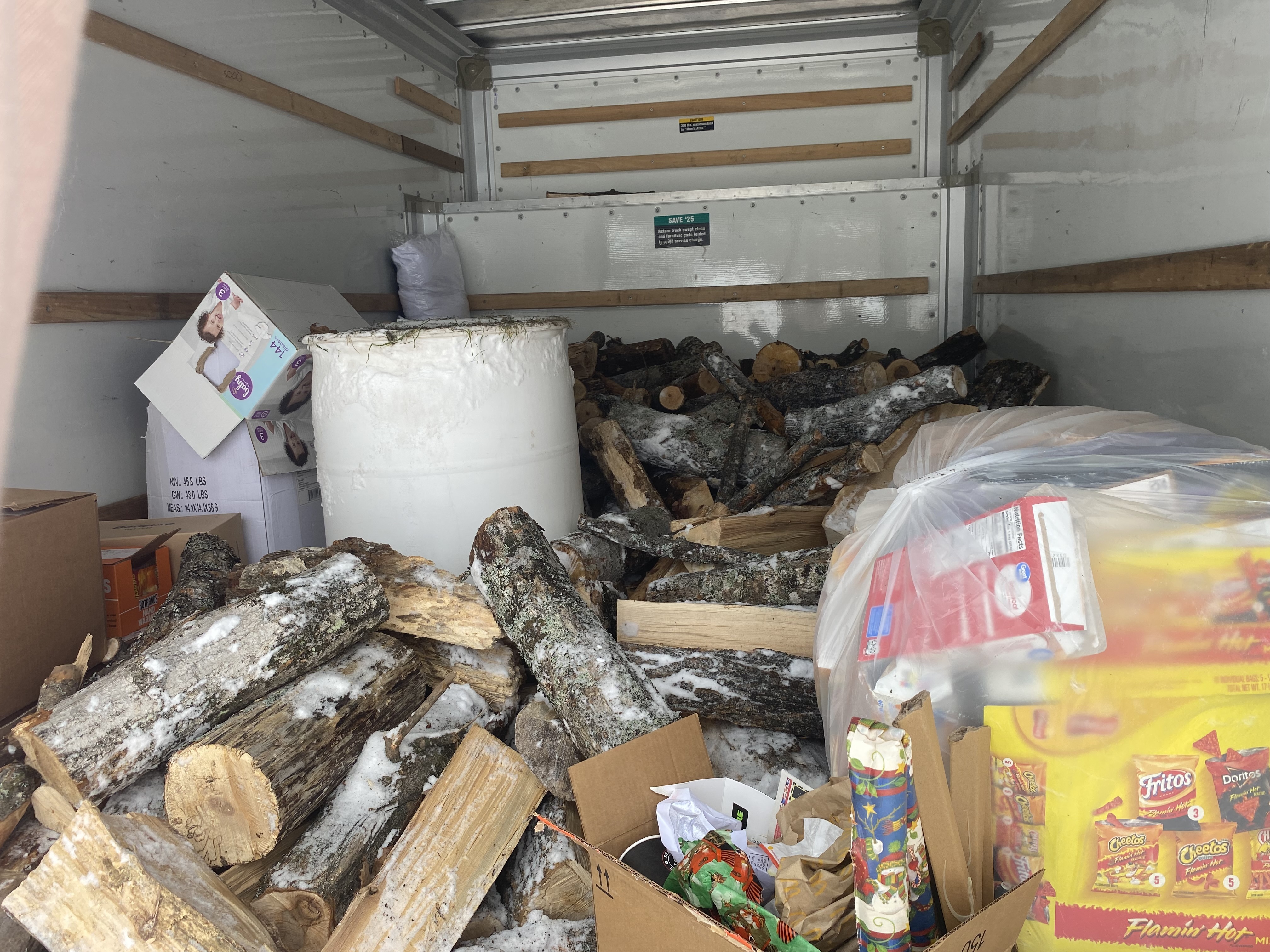 it was a terrifying drive and by the time we got there my uncle had dug out an elder name Eli Tail Sr. who unfortunately passed this fall to the cold despite all our efforts to try and better prepare for winter this year. His fire went out while he slept. That was the impetus, since then we raised another 10k to help the people and put on an important ceremony known as Sundance which hosted 200+ people and fed them for 4 days, and bring organizers from across the continent there to meet in person and have the discussions we cant here, as well as taste the pear of decolonization. After that ceremony the leaders approached us about buying the land for 10k which took us 2 weeks to raise in the previous fundraiser. We did this, raised money for a camera mans labor to take professional photos and video with a drone, helped get kids school supplies and clothes helped save someones life from a black widow bite, helped move a house for the traditional headsmen of the nation
it was a terrifying drive and by the time we got there my uncle had dug out an elder name Eli Tail Sr. who unfortunately passed this fall to the cold despite all our efforts to try and better prepare for winter this year. His fire went out while he slept. That was the impetus, since then we raised another 10k to help the people and put on an important ceremony known as Sundance which hosted 200+ people and fed them for 4 days, and bring organizers from across the continent there to meet in person and have the discussions we cant here, as well as taste the pear of decolonization. After that ceremony the leaders approached us about buying the land for 10k which took us 2 weeks to raise in the previous fundraiser. We did this, raised money for a camera mans labor to take professional photos and video with a drone, helped get kids school supplies and clothes helped save someones life from a black widow bite, helped move a house for the traditional headsmen of the nation  which ended up being more costly due to its strange architecture, and are still raising the last bit for a wheelchair for a comrade who asked for help getting a new chair as theyre facing down homelessness with ever worsening sores. linktr.ee/chunkalutanetwork will bring you to all our social media efforts where you can learn more (and eventually our website where we will host all our stuff) as well as a go fund me and a patreon where you can become a monthly supporter of these people. Every dollar I make 25 percent goes back to my homelands like many immigrants here, except my homelands are occupied by the United States and people like Hinkle and Haz pretend colonization is over. Another portion of my income also goes to my homeless mom in Eureka. Another way you can help us is we are building a community center on that land and part of the 30k we are raising goes towards the labor involved in constructing it.
which ended up being more costly due to its strange architecture, and are still raising the last bit for a wheelchair for a comrade who asked for help getting a new chair as theyre facing down homelessness with ever worsening sores. linktr.ee/chunkalutanetwork will bring you to all our social media efforts where you can learn more (and eventually our website where we will host all our stuff) as well as a go fund me and a patreon where you can become a monthly supporter of these people. Every dollar I make 25 percent goes back to my homelands like many immigrants here, except my homelands are occupied by the United States and people like Hinkle and Haz pretend colonization is over. Another portion of my income also goes to my homeless mom in Eureka. Another way you can help us is we are building a community center on that land and part of the 30k we are raising goes towards the labor involved in constructing it.
 This is the approximate land we need to get a land survey done, and the forest to the left we also manage on behalf of the tribe and use the wood for ceremony or keeping people alive.
This is the approximate land we need to get a land survey done, and the forest to the left we also manage on behalf of the tribe and use the wood for ceremony or keeping people alive.
 These are the first iteration of the blueprints, and I am sure there is something I forgot to mention we did this year. Along with this mutual aid, the community center is part of our steps toward dual power and national liberation. The building will let us feed the people, by cooking the food we will also be growing utilizing the land for food forests, and community gardens. Our most exciting project imo is the regeneration of prairie land to host buffalo and foodstuffs for ceremonial use and to feed those in need, this will lead to the decommodification of our ceremonies which currently white ranchers will charge up to 2k for a buffalo and let parts go to waste. We would do it for free and not waste a thing. We will also be utilizing this land base to reclaim other family allotments of similar size next to the bad lands and a bombing range that was stolen during WW2 under the Indian Reorganization Act, where we will plant trees to combat the desertification of the reservation due to the badlands erosion and the prairie dog problem (yes we have a solution for this too). Out of the community center we also will be starting a traditional drum group that will transition into reestablishing the former We Will Remember Survival School which AIM started back in the day in the same town we are building outside of. The people also believe we can bring back a toy drive once the community center is done that made sure every kid got a gift on christmas. They believe in us already so I think you should too. So $ZitkatosTinCan for cashapp, @zitkato for venmo,
These are the first iteration of the blueprints, and I am sure there is something I forgot to mention we did this year. Along with this mutual aid, the community center is part of our steps toward dual power and national liberation. The building will let us feed the people, by cooking the food we will also be growing utilizing the land for food forests, and community gardens. Our most exciting project imo is the regeneration of prairie land to host buffalo and foodstuffs for ceremonial use and to feed those in need, this will lead to the decommodification of our ceremonies which currently white ranchers will charge up to 2k for a buffalo and let parts go to waste. We would do it for free and not waste a thing. We will also be utilizing this land base to reclaim other family allotments of similar size next to the bad lands and a bombing range that was stolen during WW2 under the Indian Reorganization Act, where we will plant trees to combat the desertification of the reservation due to the badlands erosion and the prairie dog problem (yes we have a solution for this too). Out of the community center we also will be starting a traditional drum group that will transition into reestablishing the former We Will Remember Survival School which AIM started back in the day in the same town we are building outside of. The people also believe we can bring back a toy drive once the community center is done that made sure every kid got a gift on christmas. They believe in us already so I think you should too. So $ZitkatosTinCan for cashapp, @zitkato for venmo, 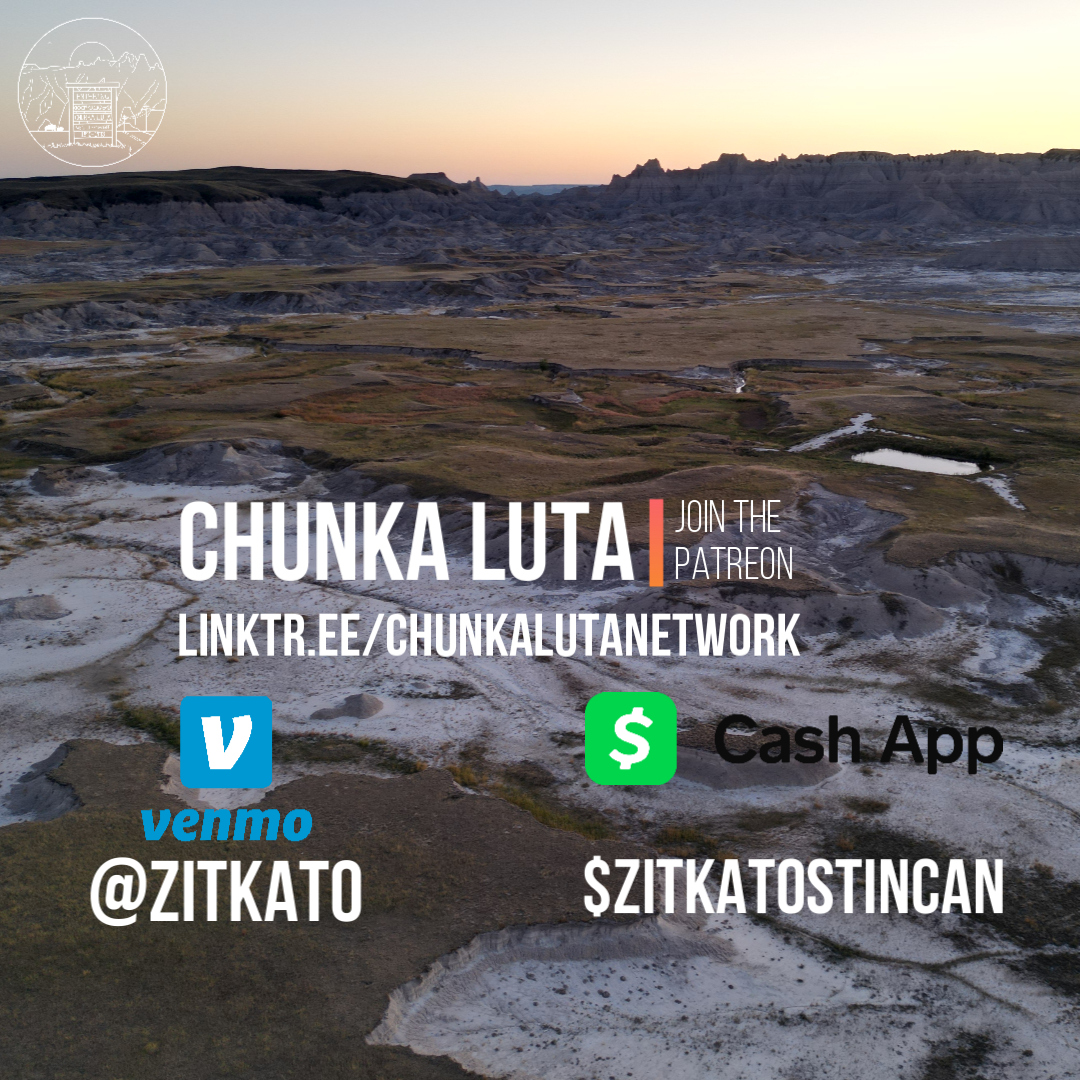
 ; it consists of seven colors patched together with diagonal stripes.
; it consists of seven colors patched together with diagonal stripes.